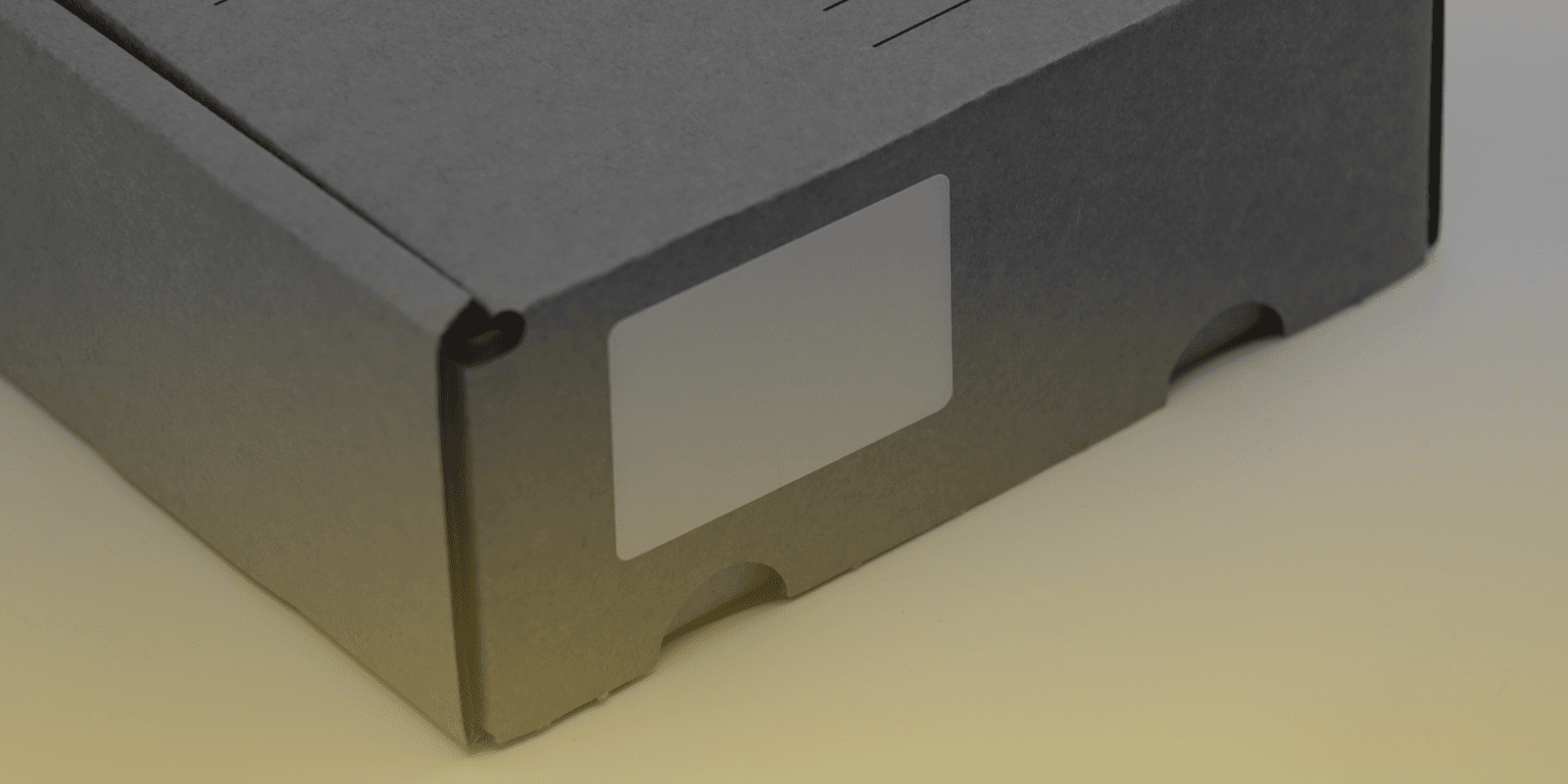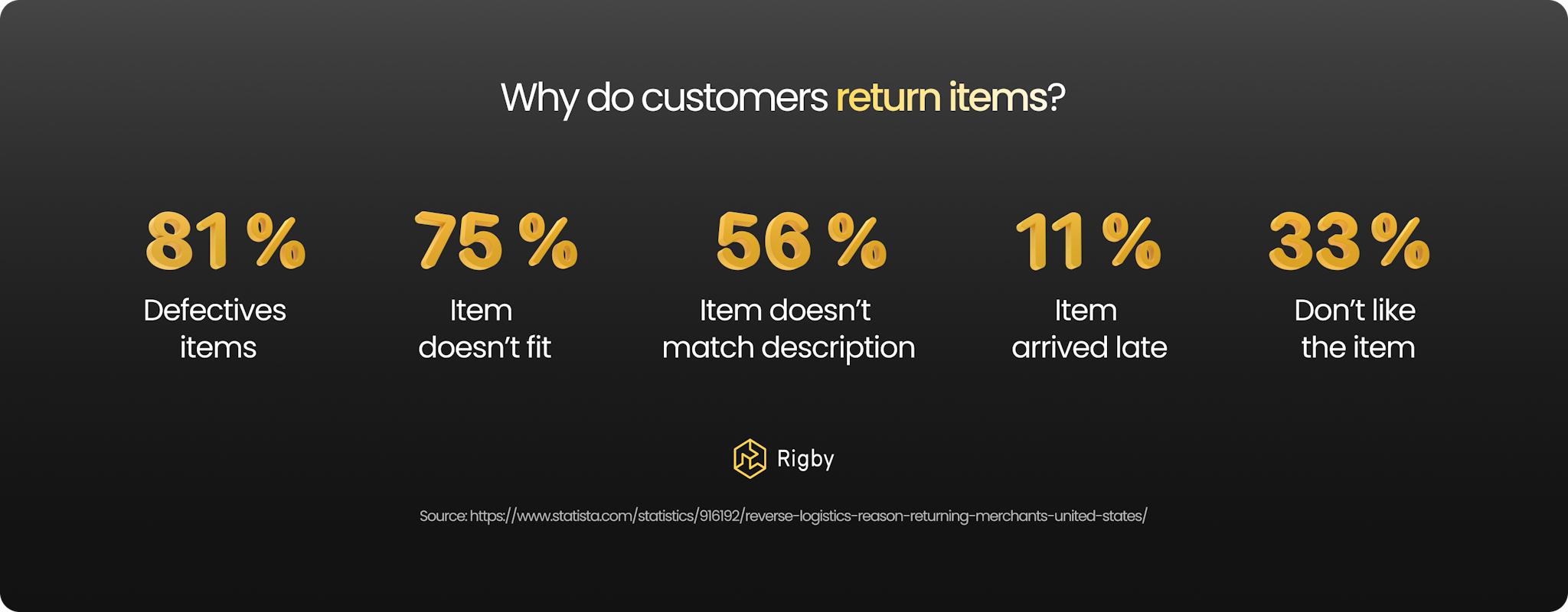How New Technology Can Reduce Returns in the Furniture Industry by up to 80%?
By Karolina Jakubowicz
By Karolina Jakubowicz

In the fast-paced world of eCommerce, the furniture industry faces unique challenges, with returns being a significant pain point. These returns not only impact profitability but also customer satisfaction.
However, advancements in technology present a game-changing opportunity for eCommerce owners in the furniture industry to address this issue head-on. According to Forbes, brands are achieving an 80% reduction in online returns by using 3D models instead of 2D static images. And this is just the beginning of revolution that technology can bring into the furniture industry...
In this article I'll explore the transformative impact of cutting-edge technology on reducing return rates, backed by data-driven research and industry insights, so read on!
How to reduce eCommerce returns? Understanding the importance of return prevention is crucial for sustaining profitability and ensuring customer satisfaction.
Making sure there are fewer returns is like making sure we meet what customers expect and even make them happier. When transactions go smoothly without mistakes, it not only makes shopping better for customers but also builds their trust and makes them want to stick around.
What is more, if returns happen less often, it means businesses don't have to spend as much time and money dealing with handling, magazine and shipping returned items, allowing to allocate resources more efficiently.
On the other hand, if a company gets known for lots of returns, it could be a sign that there are problems with the products, the size info might be off, or the customer service isn't great. This could scare away potential customers and hurt the company's reputation.
So, reducing returns is not just about being efficient – it's about keeping customers happy, maintaining a good image, and using resources smartly.

Several factors are a top reasons in influencing returns within the furniture industry. These aspects contribute to the complexities of online shopping, affecting customer satisfaction and operational efficiency.
Product Description Accuracy - If there's a mismatch between what customers expect based on the description and the actual product received, it often leads to dissatisfaction and returns. Beyond textual information, high-quality product imagery from various angles, zoom features, and even interactive 360-degree views contribute to a more accurate understanding.
Quality Assurance - Employing advanced manufacturing technologies and rigorous testing protocols improve product quality. Regular audits of production processes help identify and rectify potential quality issues before products reach customers. What is more, protective measures, such as custom-fit packaging and shock-absorbent materials, safeguard furniture items from damage. Investing in sustainable yet robust packaging contributes to both customer satisfaction and environmental responsibility.
Size and Fit Concerns - Customers may face challenges in assessing how a piece of furniture will fit into their space accurately. Offering virtual try-on experiences, interactive sizing chart, complemented by real-life product images and clear instructions on how to measure spaces effectively enhance the usefulness of size guides, reducing the likelihood of misjudgments.
Customer Expectations vs. Reality - Transparent communication and accurate representation of products are vital in addressing this challenge. If customers receive items that differ significantly from their expectations, whether in terms of color, material, or overall appearance, it often leads to dissatisfaction and subsequent returns. Also, encouraging customers to provide dynamic product reviews, including images of the furniture in their own homes, fosters a community where realistic expectations are set.
Using Augmented Reality to show customers a better view of products and let them try them virtually in their own homes, doesn't just reduce returns in ecommerce. It also means more people are likely to buy things from the start, making the business more successful.
Moreover, 61% shoppers said they would choose to shop with stores that have AR (Augmented Reality) over those without it. (Source).
Creating an AR app like IKEA Place lets customers virtually put furniture in their homes, helping them check if it fits in a small space or matches the room's design. Being able to see products in their actual place has been shown to increase the chances of customers keeping items.
3D visualization allows customers to view products from various angles, providing a more accurate representation than traditional 2D images.
Forbes research showed that using 3D models instead of 2D static images lead to a significant 40% increase in online conversion rates and a notable 30% improvement in average sales prices.
This increased visual accuracy helps customers make informed purchasing decisions, reducing the likelihood of dissatisfaction upon product arrival.
Product configurators allow customers to personalize furniture items by selecting various features such as color, material, size, and design. Personalized products are more likely to meet customer expectations, reducing the probability of returns due to dissatisfaction with the chosen features.
Deloitte found that more than half of people prefer buying things that are made just for them. What is more, they can pay about 20% more for it and want to actively engage in the customization process.
And if you want to delve deeper into Product Configurators topic - read our other article about them!
Chatbots can immediately provide detailed informations about furniture items, including dimensions, materials, and features. As a result, merchants can focus on more important duties, and customers won't have to wait for a response.
Clear and accurate product information helps customers make informed decisions, reducing the likelihood of returns due to mismatched expectations.
Acknowledging that returns may sometimes be inevitable, it's essential for the client to be well-informed about the return process. Clarity in communication is key, and clients should be empowered with a clear understanding of the step-by-step process for initiating a return.
Accessible and succinct instructions on how to navigate the return procedure are paramount. By streamlining this information, businesses not only facilitate a seamless return experience for their customers but also demonstrate a commitment to transparency. This transparency, in turn, plays a vital role in fostering trust and confidence in the brand. Clients who are well-informed about the return options and find the process straightforward are more likely to perceive the business positively, even in the face of a return.
Moreover, the significance of a well-handled return process extends beyond addressing the logistics of a return. It transforms what could be perceived as a challenge into an opportunity for businesses to showcase their commitment to excellent customer service.
In essence, a well-managed return process is not merely a resolution to an issue but a strategic move that can enhance customer loyalty and strengthen the brand-customer relationship.
The return dilemma in the furniture commerce industry demands a multifaceted approach to financial aspects, positive customer experience and brand reputation.
By addressing product description accuracy, ensuring quality, tackling size concerns, preventing damage, and aligning customer expectations, businesses can significantly reduce return rates.
Ensuring digital experience by leveraging cutting-edge technologies like AR, product configurators, chatbots and 3D visualization, alongside robust customer support systems, successfully minimize return rates.
The interplay of technology, customer-centric practices and decision-making based on feedback will determine the success of the furniture industry.
But how to implement maintenance mode in Next.js? Is it as easy as configuring a plugin on WordPress for a few minutes? Of course it is!
Magento, compared to Medusa, may lead to higher long-term costs due to its licensing model and the risk associated with the gradual decline in the popularity of the PHP language...